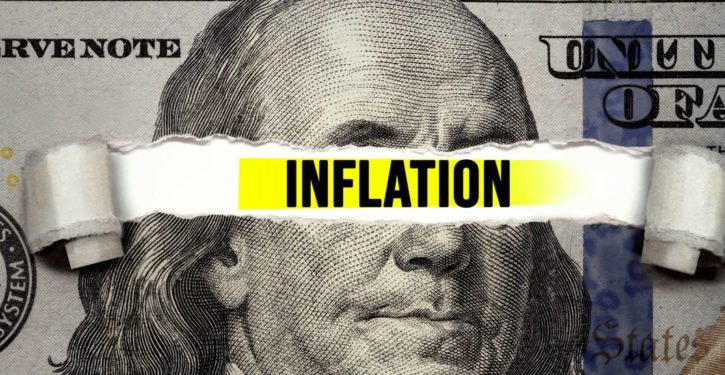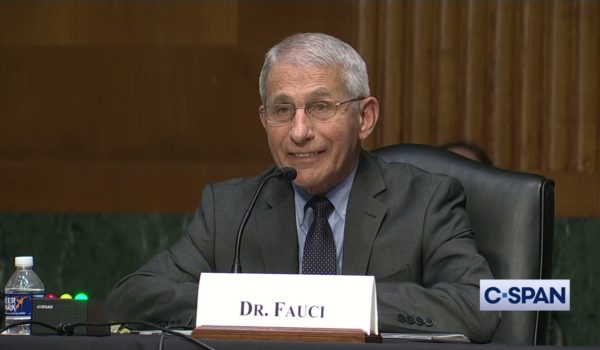
The Federal Reserve’s “preferred measure of inflation shows prices surged again last month,” reports CNN.
After hitting an alarming 40-year high in June, the Federal Reserve’s preferred benchmark for consumer inflation is once again flashing a warning sign about the persistence of high prices.
The Bureau of Economic Analysis said Friday the Personal Consumption Expenditures price index for August rose by 6.2% from a year ago, following a revised July reading of 6.4%….The latest inflation data puts more pressure on Fed Chair Jerome Powell, who has vowed to make taming inflation the central bank’s “overarching focus.”
The August Consumer Price Index, another major inflation gauge, surprised economists in mid-September with a core reading for the month that rose instead of falling as expected.
The Fed has been battling to get runaway inflation under control for months by raising its benchmark interest rate, initiating the most aggressive tightening cycle in four decades with a total of five increases so far this year, including three back-to-back hikes of three-quarters of a percentage point each.
But to date, economists say the minimal extent to which headline inflation has moderated is almost entirely a function of lower energy costs. This is reflected in the stubborn persistence of high core inflation, which backs out energy as well as food prices.
This is bad news for the Fed. Its primary policy tool — raising interest rates and making it more expensive to borrow money in order to cool demand — has no effect on the supply shocks that have characterized the current inflation situation.
In a speech Friday, Fed Vice Chair Lael Brainard was blunt in her assessment of the seriousness of domestic and global economic risks. “Inflation is very high in the United States and abroad, and the risk of additional inflationary shocks cannot be ruled out,” she said in prepared remarks….This bifurcated dynamic of headline inflation ticking down while core inflation rises is attributable to the drop in energy prices — which worries economists who warn that this reprieve is unlikely to last as the Northern Hemisphere heads into winter and the Organization of the Petroleum Exporting Countries along with its oil-producing allies are said to be considering another output cut.
Core inflation, which has risen, is the “better predictor” of future inflation than the measure that includes volatile energy prices, says Thomas Martin, senior portfolio manager at Globalt Investments.
“The big upside risk to inflation over the near term is the possibility of higher energy prices, especially given the explosion on the Nord Stream pipeline in the Baltic Sea and no sign of a quick end to the Russia-Ukraine war,” said Bill Adams, chief economist for Comerica Bank.
A shrinking economy is expected. “The stats are now showing household finances under even more pressure [and] discretionary consumer spending is going to be less of a driver of the economy in fall and winter,” Adams said. America’s “personal savings rate is down nearly a full percentage point since the beginning of the year, as households cope with rising expenses by drawing down the savings accumulated early in the pandemic,” he says.
The stock market has lost value. The S&P 500, the broadest of the three leading stock market indexes as a share of the U.S. economy, fell to 3585.62 on Friday. When Biden took office, the S&P was at 3852. Now, it’s at 3,586 — seemingly down by 7%. But it’s actually down a lot more than that, because there has been 13.2% in inflation since he took office — that’s the amount of inflation America had experienced under his presidency as of early September 2022, when the Consumer Price Index had risen to 296.171 from 261.52 at the start of Biden’s presidency. Factoring in inflation, the stock market is down nearly 20%.
It’s not just stocks that are losing value. So are bonds. High inflation is making them worth less. Interest rates on municipal bonds are often under 3%, much lower than the current inflation rate of over 8 percent.
Since people’s retirement accounts usually contain stocks, bonds, or stock mutual funds, dropping stock and bond values have left many Americans’ 401(k)s and retirement accounts smaller in real terms than when Biden took office.
While prices are going up, people’s savings are shrinking. Most people’s savings accounts are earning interest rates of less than 1%, which fails to keep pace with an inflation rate of over 8%. Effectively, people’s savings accounts are losing over 7% of their value each year.
These stock market declines reflect economic weaknesses: the U.S. economy shrank at a rate of 0.9% in the second quarter of 2022. It shrank at a rate of 1.4% in the first quarter of 2022, reflecting a huge rise in America’s trade deficit. American exports decreased by 9.6%, while imports grew by 17.7%. U.S. productivity dropped at a 7.5% annual rate, the most since 1947.
Under Trump, the U.S. economy outperformed Europe, especially during the pandemic year of 2020, when Britain, France and Italy experienced much sharper economic declines than the U.S. The U.S. economy shrank 3.5% in 2020. The economy shrank much more in Europe: 7.9% in France, 9.9% in the United Kingdom, and 8.9% in Italy.
But that has changed under Biden. While America’s economy was shrinking recently, France’s economy was growing in 2022, and France’s inflation rate is lower than America’s. A finance professor describes the current era in the U.S. as “The Biden stagflation,” combining high inflation with economic stagnation.
Inflation is higher in the U.S. than in countries like Japan, where the inflation rate is only 3%. In Switzerland, the inflation rate is only 3.5%.
Biden’s policies caused inflation, according to economists like Bill Clinton’s Treasury Secretary, Larry Summers, and Obama advisor Steven Rattner. As Rattner noted in the New York Times, Biden has spent “an unprecedented amount” of taxpayer money, which resulted in “too much money chasing too few goods.”
America’s economic productivity may decline further. The economy is being held back by Biden Administration policies that discourage work, reward idleness, and make it harder for companies to attract employees. Biden enacted policies that reduced the size of America’s private-sector workforce and made America less economically competitive.



